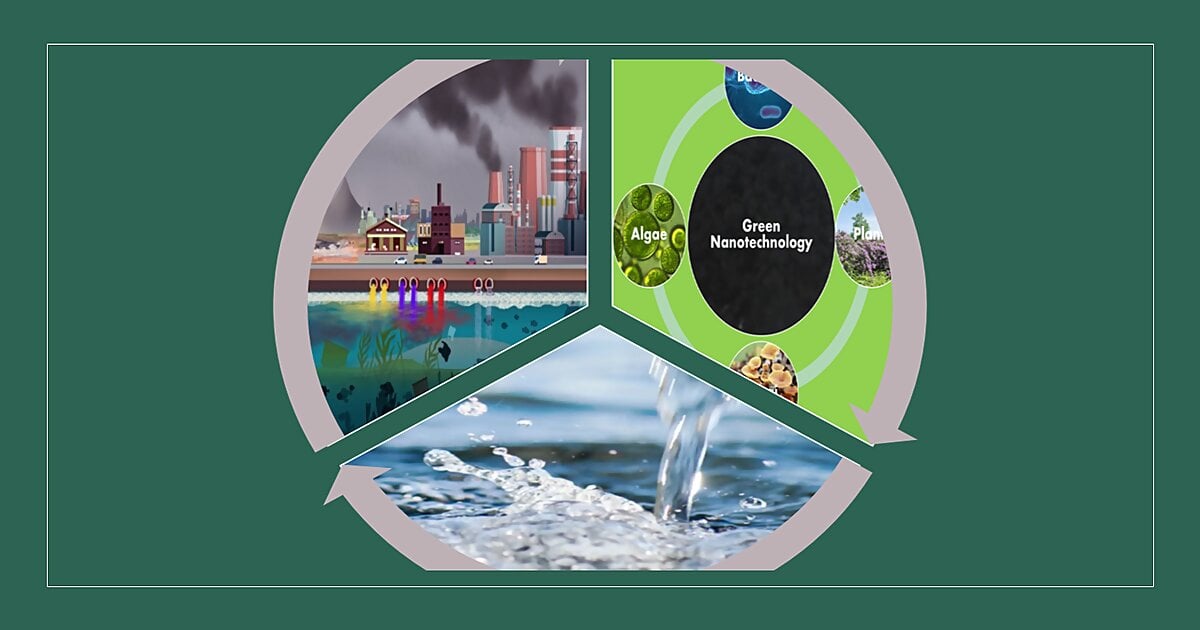- 2.5Impact Factor
- 5.5CiteScore
- 20 daysTime to First Decision
Green Nanotechnology and Its Application in Wastewater Treatment
This special issue belongs to the section “Nanotechnology and Applied Nanosciences“.
Special Issue Information
Dear Colleagues,
As a critical constituent of the earth, water is responsible for sustainable living. The utmost vulnerability of water globally is its contamination due to environmental and anthropogenic factors. As a result of the improper disposal of industrial effluents, the contamination of water bodies with various heavy metals, dyes, pesticides, pharmaceutical products, and radioactive substances continually impacts all living organisms, thereby leading to well-being-associated concerns in humans and the devastation of the environment. Hence, the confiscation of these pollutants from industrial wastewater is imperative in decreasing the noxiousness of these pollutants before they are released into water bodies. To curtail the occurrence of this menace in our water bodies, cutting-edge research is being conducted on the use of nanotechnology to remediate contaminated water. A key challenge for the present situation has been providing sustainable development for the next generation by employing the ideas and theories of green chemistry and engineering in creating nanomaterials without toxic end effects, which could be applied in water remediation. Recently, there has also been a great interest in the advancement and utilization of nanomaterials resulting from the green technique (green nanotechnology) in various fields, particularly in the remediation, as well as in the sensing and prevention of hazardous contaminants in water, to the levels permitted by the World Health Organization (WHO) owing to their cost-effectiveness, biocompatibility, appropriateness and green opportunities. The development of nanomaterials employing green nanotechnology looks at ways to eradicate toxic chemicals in the fabrication of these nanomaterials from plants, bacteria, algae and fungi to decrease their effects on the environment and provide these nanomaterials with enhanced properties such as a reduced size, increased surface area and quantum effect. These nanomaterials properties are critical to the enhanced confiscation of pollutants from water, without loss of their stability and their potential reusability in water treatment. Hence, this Special Issue will attempt to assemble a collection of both research and review articles on the recent advances, development, and future prospects of green nanotechnology and its application in wastewater treatment.
Dr. Uyiosa Osagie Aigbe
Dr. Kingsley Eghonghon Ukhurebor
Dr. Robert Birundu Onyancha
Dr. Heri Septya Kusuma
Guest Editors
Manuscript Submission Information
Manuscripts should be submitted online at www.mdpi.com by registering and logging in to this website. Once you are registered, click here to go to the submission form. Manuscripts can be submitted until the deadline. All submissions that pass pre-check are peer-reviewed. Accepted papers will be published continuously in the journal (as soon as accepted) and will be listed together on the special issue website. Research articles, review articles as well as short communications are invited. For planned papers, a title and short abstract (about 250 words) can be sent to the Editorial Office for assessment.
Submitted manuscripts should not have been published previously, nor be under consideration for publication elsewhere (except conference proceedings papers). All manuscripts are thoroughly refereed through a single-blind peer-review process. A guide for authors and other relevant information for submission of manuscripts is available on the Instructions for Authors page. Applied Sciences is an international peer-reviewed open access semimonthly journal published by MDPI.
Please visit the Instructions for Authors page before submitting a manuscript. The Article Processing Charge (APC) for publication in this open access journal is 2400 CHF (Swiss Francs). Submitted papers should be well formatted and use good English. Authors may use MDPI's English editing service prior to publication or during author revisions.
Keywords
- green nanotechnology
- remediation
- nanomaterials
- contaminants
- green synthesis

Benefits of Publishing in a Special Issue
- Ease of navigation: Grouping papers by topic helps scholars navigate broad scope journals more efficiently.
- Greater discoverability: Special Issues support the reach and impact of scientific research. Articles in Special Issues are more discoverable and cited more frequently.
- Expansion of research network: Special Issues facilitate connections among authors, fostering scientific collaborations.
- External promotion: Articles in Special Issues are often promoted through the journal's social media, increasing their visibility.
- e-Book format: Special Issues with more than 10 articles can be published as dedicated e-books, ensuring wide and rapid dissemination.

